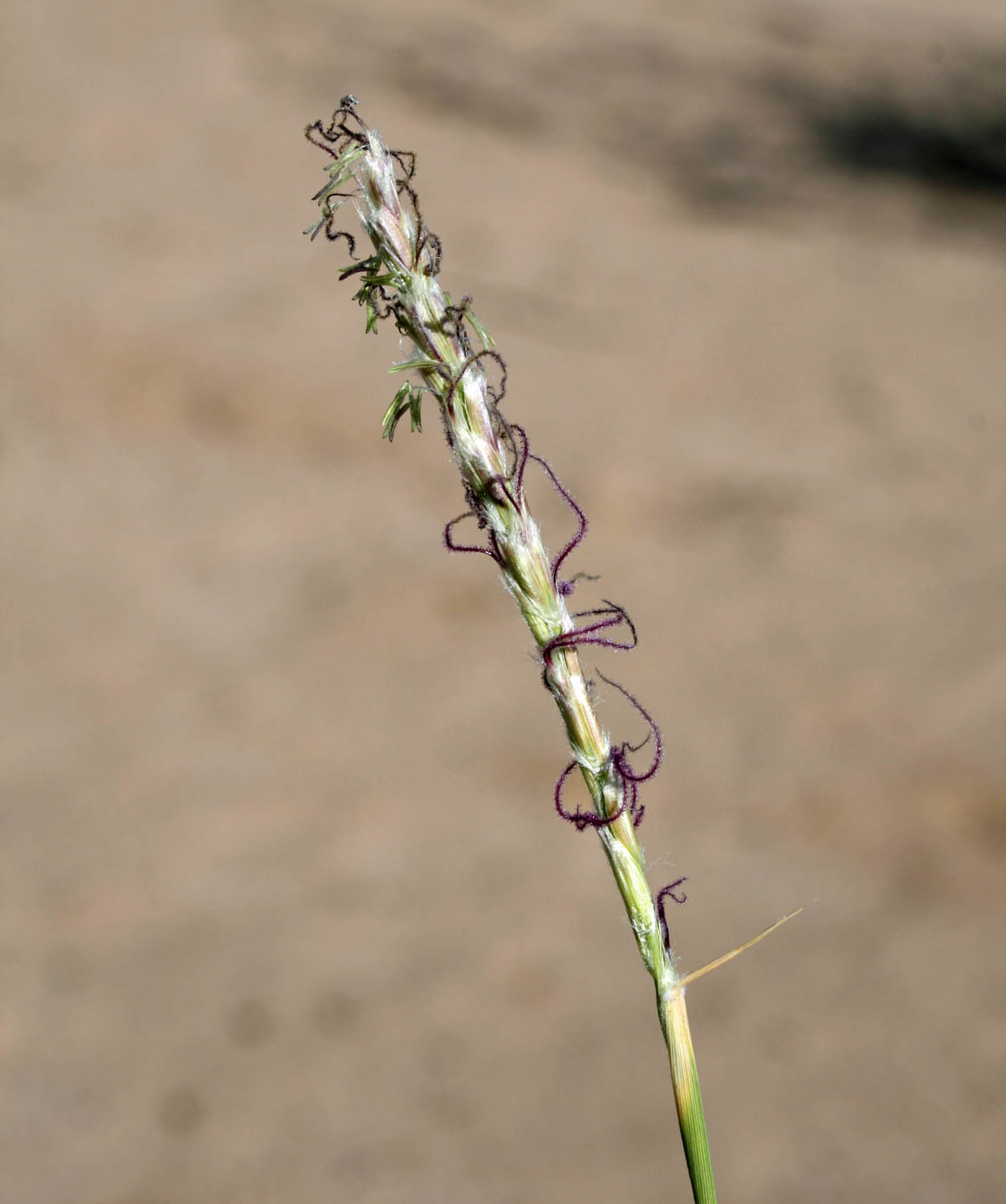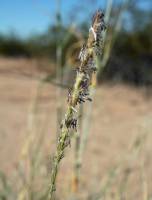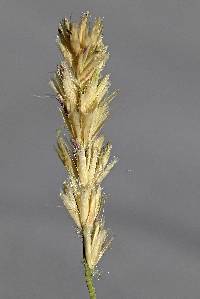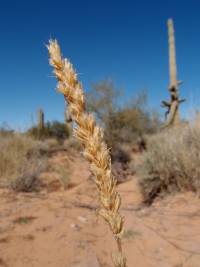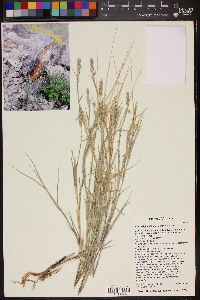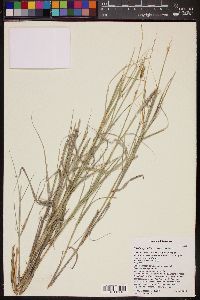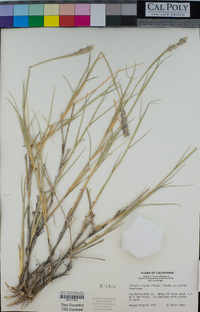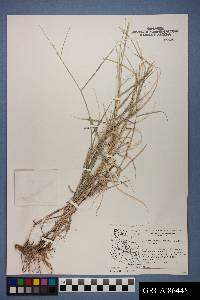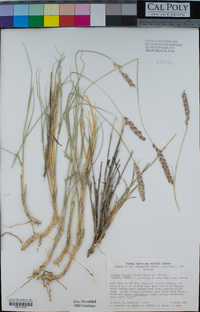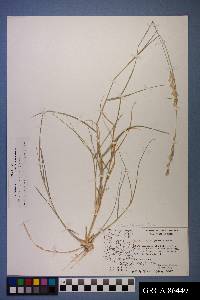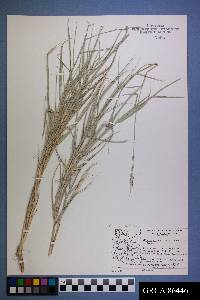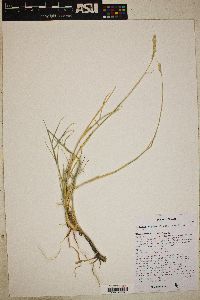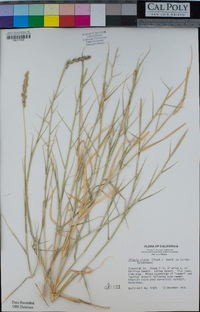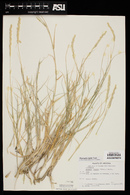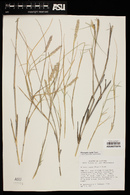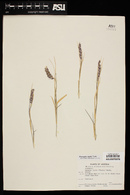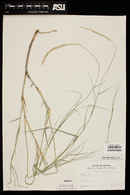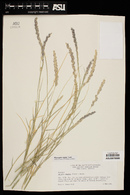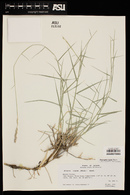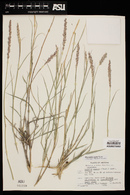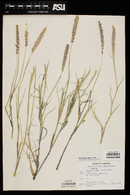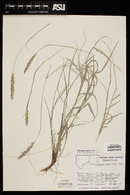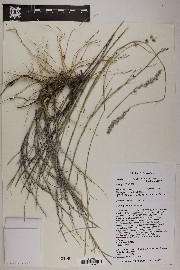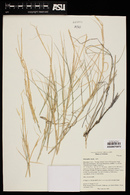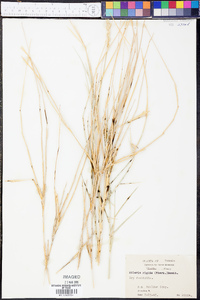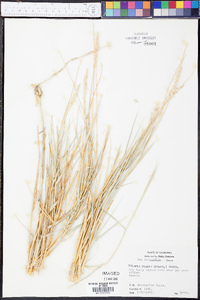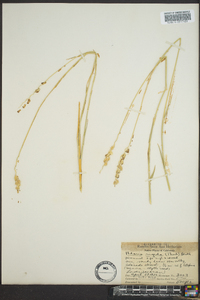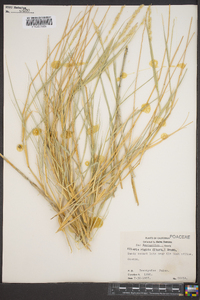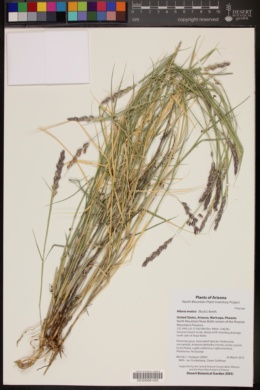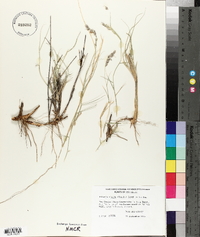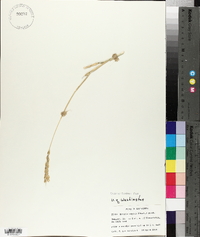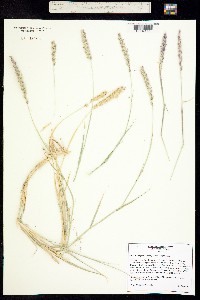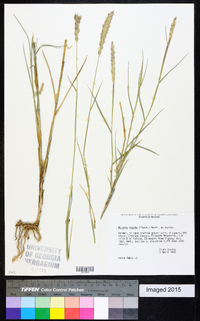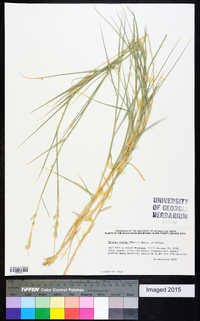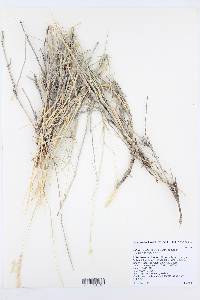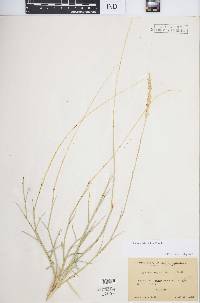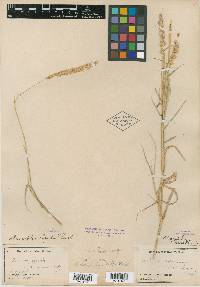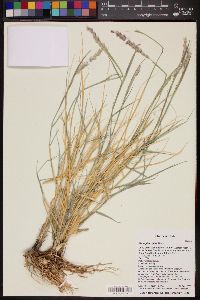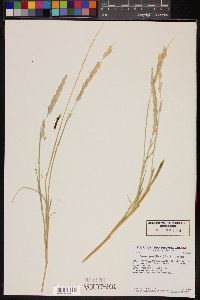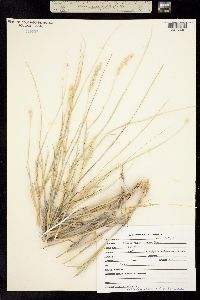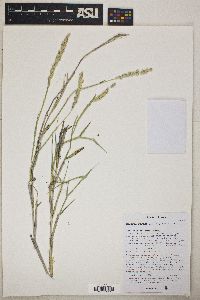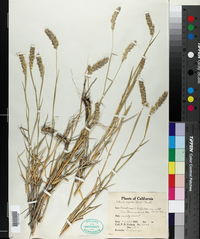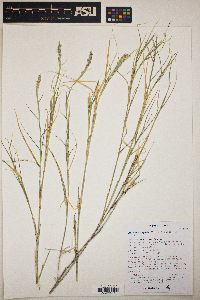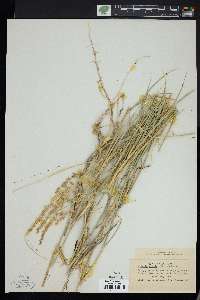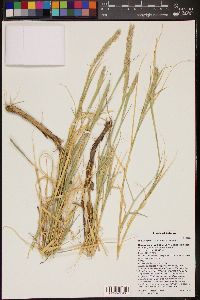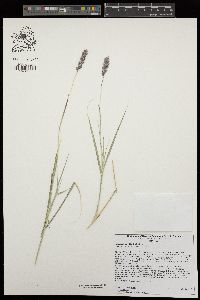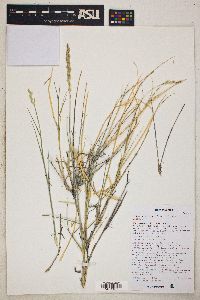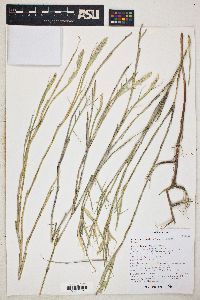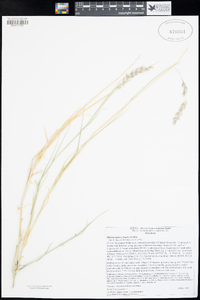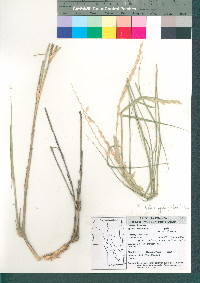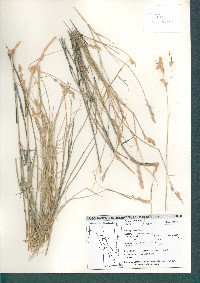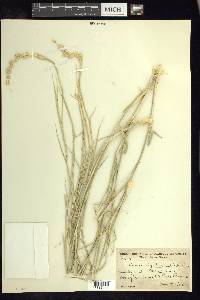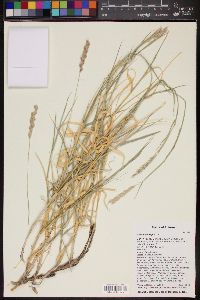Hilaria rigida
|
|
|
|
Family: Poaceae
Big Galleta, more...big galleta, big galleta grass (es: galleta, toboso)
[Pleuraphis rigida Thurb.] |
Plants perennial; cespitose, sometimes rhizomatous. Culms 35-250 cm, decumbent, much branched above the base, becoming almost woody; upper nodes glabrous or villous, hairs to 1.5 mm; lower internodes tomentose. Ligules 1-2 mm, densely ciliate; blades 2-10(16) cm long, 2-5 mm wide, flat basally, involute distally. Panicles 4-12 cm; fascicles 6-12 mm. Lateral spikelets with 2-4 florets, lower 2 florets staminate, other florets (if present) usually sterile; glumes thin, membranous, not fused at the base, lanceolate or parallel-sided, 7-veined, awned, awns exceeding the glume apices, apices 2-4-lobed, lobes acute to rounded, long-ciliate, sometimes with 1-3 excurrent veins that form additional slender awns to 1.8 mm; lower glumes with dorsal, divergent awns; upper glumes with subapical awns; anthers 3, 4-4.5 mm. Central spikelets equaling or exceeding the lateral spikelets, with 1 stipitate, bisexual floret; glumes thin, membranous, narrow, deeply cleft into few-several acuminate, ciliate lobes and slender awns; lemmas often exceeding the glumes, thin, ciliate, 2-lobed, midveins excurrent. 2n = 18, 36, 54. Hilaria rigida grows in deserts and open juniper stands, at low elevations, from the southwestern United States to central Mexico. Although almost shrubby, it is very popular with pack horses. FNA 2003, Gould 1980, McDougall 1973 Common Name: big galleta Duration: Perennial Nativity: Native Lifeform: Graminoid General: Coarse tufted perennial grasses, 35-100 cm tall, from a hard rhizomatous base; stems decumbent, spreading and branching at the base, becoming erect or ascending above; lower stems felty-pubescent, stout, and becoming almost woody; upper nodes glabrous or villous, the hairs to 1.5 mm. Vegetative: Sheaths often felty-pubescent; blades 2-10 cm long, 2-5 mm wide, flat at the base and involute above, with the tip acuminate into a rigid point; ligules 1-2 mm, densely ciliate. Inflorescence: Spikes 4-12 cm long, each node of the rachis with a cluster of 3 appressed, sessile spikelets about 8 mm long. Lateral spikelets in each cluster with 2-4 florets, the lower 2 florets staminate and the upper floret(s) usually sterile; glumes of the lateral spikelets parallel-sided, membraneous, long-ciliate, 7-nerved and 2-4-lobed at the summit, with 1-3 nerves extending into awns. Central spikelet in each cluster slightly exceeding the lateral spikelets, with one stipitate, bisexual floret; glumes of central spikelet similar to those of lateral spikelets; lemma of central spikelet 2-lobed, 1-awned, and exceeding the glumes in length. Ecology: Found in deserts, plains, and rocky hills, below 4,000 ft (1219 m); flowers February-September. Distribution: UT, NV, CA, and AZ; south to n MEX (Sonora) Notes: The genus is distinguished by the rigid inflorescence spikes with groups of 3 sessile, awned spikelets, that when mature, have conspicuous tan-white papery bracts (glumes) which often splay out. The 3 spikelets fall as a unit and leave a characteristic zig-zag naked seed stalk. When dormant, pay attention to the appearance of the remnant spike and how it has a flattened crook where the seed was attached. The species often appears as tufts or small clumps of stems from the rhizomes, which are deep underground. H. rigida is easily distinguished from the other Hilaria spp. in the region by its felty-pubescent lower stems and sheaths. Ethnobotany: Unknown, but other species in the genus have uses. Etymology: Hilaria is named for Auguste St. Hilaire (1779-1853), a French naturalist; rigida means stiff. Synonyms: Pleuraphis rigida Editor: SBuckley 2010, AHazelton 2015 |
|
|
|

